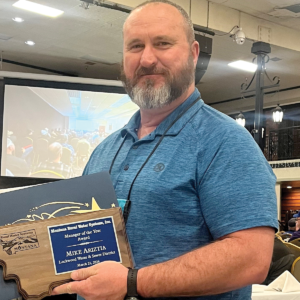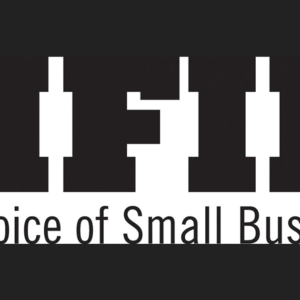By Evelyn Pyburn
The woman who headed the Drug Enforcement Administration (DEA) in Montana, since 2018, retired a couple weeks ago. Stacy Zinn really didn’t want to retire, but the agency required that at age 57, she do so. But Zinn has much more work to do – much more.
Zinn very much wants Montana citizens to know and understand what is happening in their communities, and retirement is not going to end her efforts to make more transparent the activities of DEA and other law enforcement. Citizens must know in order to bring about the changes that are needed, and to become engaged. Law enforcement are doing their very best to protect the community and they need the community’s support in the fight against the crime associated with illegal drugs, said Zinn. Almost all crime that happens in Billings has a link to illegal drugs.
But Zinn’s real passion is to educate kids. Kids as young as 12 and 13 are having to deal with the issue of drugs in the schools and among their peers, and they usually know nothing about the risks they face – and often, neither do their parents. Most parents are not aware of how dangerous the situation is.
In fact, the drug, LSD, is seeing a comeback among junior high school kids in Billings, reported Zinn last year.
Somehow, said Zinn, “we quit messaging our kids.” At one time there were anti-drug campaigns, seminars in schools and posters on every corner, explaining what drugs are, how to recognize them, how to deal with situations, and the life and death consequences drug use poses – but little of that is happening any more. Zinn is determined to change that. She is willing to go to any classroom, talk to groups of parents, or to individuals one-on-one to inform and educate.
“We can’t arrest ourselves out of this,” said Zinn, stressing that the youth is where it has to start.
Few people know more about the illegal drug trade than Zinn, who began her career with the DEA (Drug Enforcement Agency) as an undercover agent in El Paso, Texas, dealing with leaders in the cartels. While “I saw first- hand the movement of cartels sneaking in,” and it was deadly serious, “it wasn’t quite the free-for-all it is now.”
Zinn learned how the cartels operated as they fought for control in areas of South America. Each cartel would establish different areas as their territory and anyone “operating” in that area had to pay a tax to whoever had control of the area, explained Zinn.
Zinn was plunged into the arena as an undercover agent in Peru. When the agency became aware that a cartel had put out a hit on Zinn’s life, she was relocated. In 2005, the DEA assigned her to FAST, or Foreign-deployed Advisory and Support Team. She spent three years in Afghanistan investigating the opium trade that financed the Taliban and Al Qaeda. During those years she escaped two more attempts on her life.
Being in South America and then in Afghanistan for all those years, Zinn said she was out of touch with what was happening in the US. It was something of a surprise to see how much the organized crime of drug trafficking had invaded the country.
In 2014, when she was assigned as a supervisor for the Tactical Diversion Squad in Montana, there was some expectation that Montana was removed from the heavy crime, and she was dismayed at the level of activity there was in Montana. However, Montana, Wyoming, North Dakota and South Dakota do remain as four of the least untouched states by illegal drug crime.
As the criminals fight for turf they are aware of the potential of these states and of Montana – and they are watching closely to “see how we handle it,” said Zinn.
“What they see in Montana is the dollars,” said Zinn. Drugs that cost a few pennies in Mexico increase in price as they move further north. By the time they reach Billings, depending on the drug, they can cost $40, and in Sidney the price could be $120.
“Montana is one of the last frontiers that hasn’t been saturated with drugs. That is why the prices are so high,” said Zinn.
The risk of fentanyl comes with the inexpensive high it provides. . When a person takes opioid pills over and over the effect of the drug diminishes – “you don’t get that euphoric feeling.” It’s called “chasing the dragon,” explained Zinn. The cartels found a less expensive addictive alternative. “If you mix fentanyl with heroin and you take that and you don’t overdose and die, you get that original euphoric feeling — every time,” explained Zinn.
The problem is users have no idea what dosage of fentanyl they are getting, and it takes but a very miniscule amount to make the difference between a high and death. More people are dying than ever. Part of the risk of fentanyl is that innocent bystanders who accidently come into contact with it can die immediately. It is facts like this that Zinn wants the public to know so they can be aware about the dangers of doing things as simple as picking up trash in the park or where they let their children play.
The status of drug trafficking in Montana has escalated since Zinn’s arrival in 2014. At that time, to intercept a half pound on the streets was “big time”, said Zinn, contrasting that to the fact that now law enforcement can confiscate 70 pounds in a month.
People come here from other areas of the country where they have been “kicked out of their street corners,” by competing dealers. They come to Montana from Arkansas, Louisiana, Mississippi and Alabama.
The influx of cartels from Mexico to Montana or from the Fresno Bulldogs is not so much the transplanting of a whole gang, but of “runners” or a few individuals who then set up locals to distribute.
They may come and set up shop in a motel. And, unfortunately in Montana, they have especially targeted Native American communities as bases of operation. But no matter where they go, they start with individuals who are willing to actively participate. They give them free meth, and then when they return for more they ask for money, and then in order to get the money, the newly recruited are pressured into selling and distributing. Zinn noted that the drug lords eagerly trade for is guns. There is a huge demand for guns in Mexico. That is why there are such high incidents of gun thefts from vehicles in Billings. It is why local police are urging people not to keep guns in vehicles.
Zinn addressed the most recent crime wave that seems to have hit Billings. Who is responsible?
Zinn calls them “wannabe gang bangers.”
Zinn explained that law enforcement is trying to gather information about those involved, which is very difficult and “always fluid.” It’s a tedious process of making connections with who suspects know, who they hang out with, and their past history. “Intel is flued and they have to keep building onto the facts,” said Zinn about the process.
Local law enforcement is putting together a picture of the perpetrators —youngsters of about 14 years and older, who are generally new to Billings.
A couple of them seem to be transplants from California where they had some affiliation with small gangs. They have brought that mentality here, and are now trying to establish their own gangs. Their numbers are unknown.
The question is “who is training and organizing these kids?” said Zinn. Someone older is encouraging them and giving them direction in regard to such things as what cars are easiest to break into, how to break down a gun, what crimes are less likely to be prosecuted.
Law enforcement is trying to identify the mentors. Are the kids having to “pay taxes to their highers?” is a question to be answered.
That there are cartel members in Billings or other more experienced criminals is not being ruled out. Zinn said that there has been some corroboration that members of a notorious gang known as the “Fresno Bulldogs” have a presence in Billings and that “the cartels are running amuck.” Whether that is true is not known, but there is no doubt, according to Zinn, that what is unfolding in Billings is being watched closely by others outside the area, waiting to see if this might be a good place to establish themselves. “How Billings handles the situation is important.”
The past few weeks of one shooting after another is an escalation of violence that indicates that the young gang members are “getting cocky”. It’s likely that they are using illegal drugs – “at least marijuana.”
Chief of Police Rich St. Johns got it right, said Zinn, when he said that the most likely scenario is these are kids who do not know how to handle confrontation “and they go immediately to a gun.”
The wannabes are hanging out in parks, most especially in the vicinity of North Park around 17th, 18th and 19th streets, and on the south side of Billings. They are attracted to events – -“a large gathering that attracts kids.”
“It’s a tragedy to see kids so young throwing away their lives.” Zinn is talking about the kids taking the drugs and those peddling them. Kids like this often have little parental supervision or have parents with a criminal past themselves, noted Zinn.
Zinn believes that citizens in Billings must play a role in fighting against the crimes. The most important thing citizens can do is pay attention to what is happening in their neighborhoods, and “if you see something, say something.” Call the police’s non-emergency number and report the suspicious activity, “Billings police has indicated that they want that information,” she said.
Get to know your neighbors. Maybe the Neighborhood Watch program needs to be resurrected. Get your neighbors’ phone numbers so you can notify them if there is something they should know about.
And, most important make sure your children know about the dangers of drugs and how the drug dealers manipulate them. “We have to focus on kids. Plant the seeds that drugs are dangerous. If you give them the facts, kids are going to process it.” She further urged, “Give your kids information that generates more conversation at dinner tables. Open lines of communication so kids feel comfortable bringing information to adults. Educating parents and opening the lines of communication – kids are more apt to tell you things.”
“Regardless of what kids are thinking if they are committing crimes and getting away with it, they are leading the way,” said Zinn.
Because drugs can look like prescription medicine it’s important for everyone to understand not to buy pills or borrow pills. If you don’t get pills from a doctor, don’t take any at all.
Businesses, too, play an important role. Clean up graffiti as soon as it happens. “Leaving it only encourages more.” Zinn explained that often the graffiti proclaims “this is our area” to other gangs.
Install fencing and lighting and camera systems. “A good security systems can help law enforcement,” said Zinn.
“Businesses that have policies against confronting or arresting shop lifters, are creating a conducive environment for the criminals,” said Zinn, “They are encouraging crime.”
Landlords have to be responsible and know who they are renting to and make sure they know what is happening on their property.
And, amid all these efforts “we need to speed up the whole system” in adjudicating crime. “We have to have prosecutors and judges who can expedite the legal process,” said Zinn, adding “we don’t have enough defense attorneys.”







